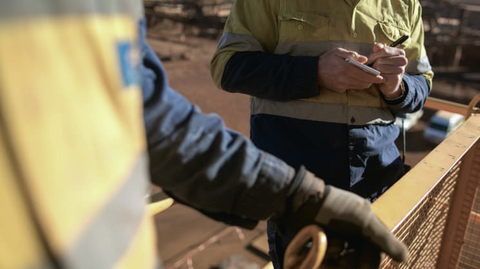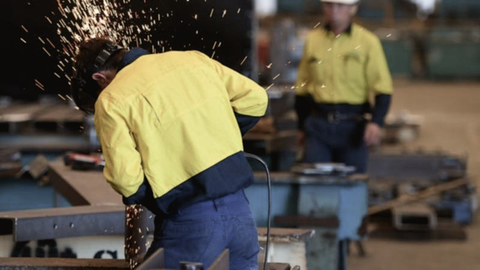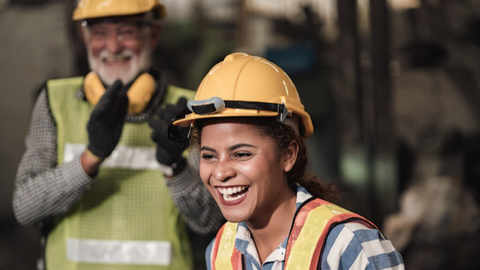What is Safe Work Australia and what does it do?
Share

Safe Work Australia is an Australian federal statutory body representing the interests of workers and employers, and the Commonwealth, state and territories. It was established to develop national policy aimed at enhancing workplace health and safety, and workers’ compensation arrangements.
Its primary objective is to improve the health and safety of workers across Australia, including compensation schemes for those who have been injured at work. It’s jointly funded by the Commonwealth, state and territory governments through the Intergovernmental Agreement for Regulatory and Operational Reform in Occupational Health and Safety.
Importantly, Safe Work Australia doesn’t implement or administer its policies; it entrusts member states and jurisdictions to regulate and enforce workplace safety laws.
All Australian workers, regardless of their occupation or the basis of their employment, have the right to a healthy and safe working environment.
1. Safe Work Australia history
Before the establishment of Safe Work Australia, various agencies and bodies were responsible for workplace health and safety regulation at the state and territory levels.
These included organisations such as the National Occupational Health and Safety Commission (NOHSC), which was established in 1985 to develop national standards and guidelines for workplace health and safety.
In the late 1990s and early 2000s, there was a growing recognition of the need for a more coordinated and harmonised approach to workplace health and safety regulation across Australia. This led to discussions among governments, industry groups, unions, and other stakeholders about the establishment of a national body to oversee work health and safety matters.
Safe Work Australia was officially established on 1 November 2009 under the Safe Work Australia Act 2008. It was created as a statutory body to develop national policy and standards for workplace health and safety, as well as workers’ compensation and rehabilitation.
One of the key initiatives undertaken by Safe Work Australia was the development of model work health and safety laws. These laws were designed to provide a consistent and coordinated framework for workplace health and safety regulation across all jurisdictions in Australia.
The model laws were based on extensive consultation and input from stakeholders and aimed to streamline compliance for businesses operating across multiple states and territories.

2. Main roles of Safe Work Australia
Safe Work Australia promotes and improves workplace health and safety standards across Australia, with the ultimate aim of reducing work-related injuries, illnesses and fatalities.
Policy development: Safe Work Australia develops and reviews national policies, strategies and initiatives to improve work health and safety standards across the country. This involves collaborating with various stakeholders including governments, industry groups, unions and safety professionals.
Regulatory framework: The organisation provides guidance and support to jurisdictions in implementing consistent and effective work health and safety laws and regulations. This includes harmonising legislation across different states and territories to ensure a cohesive approach to workplace safety.
Research and analysis: Safe Work Australia conducts research and collects data on work-related injuries, illnesses, and fatalities to identify trends and emerging issues in workplace safety. This information helps inform policy development and targeted interventions.
Education and awareness: The organisation promotes awareness and understanding of work health and safety issues through educational campaigns, resources, and initiatives aimed at employers, workers, and the general public. This includes providing guidance on risk management, safe work practices, and legal obligations.
Consultation and collaboration: Safe Work Australia facilitates consultation and collaboration between governments, businesses, workers and other stakeholders to address key challenges and priorities in work health and safety. This collaborative approach ensures that diverse perspectives are considered in policy development and implementation.

3. Safe Work Australia codes of practice
Model codes of practice serve as practical guides for achieving the standards of health and safety mandated by the model WHS Act and Regulations.
For a model code of practice to carry legal weight in a specific jurisdiction, it must be formally approved as a code of practice within that jurisdiction.
Once approved, a code of practice becomes applicable to any individual or entity with a duty of care under the circumstances outlined in the code. In most instances, adhering to an approved code of practice would be considered fulfilling the health and safety obligations stipulated in the jurisdiction’s WHS Act and Regulations.
Similar to regulations, codes of practice address specific issues but don’t encompass all potential hazards or risks that may arise in a workplace setting. Health and safety duties require a comprehensive consideration of all risks associated with work activities in a workplace, not just those risks for which regulations and codes of practice have been developed.
Safe Work Australia has published a wide range of codes of practice for Australian workplaces.
- Abrasive blasting
- Confined spaces
- Construction work
- Demolition work
- Excavation work
- First aid in the workplace
- Hazardous manual tasks
- How to manage and control asbestos in the workplace
- How to manage work health and safety risks
- How to safely remove asbestos
- Labelling of workplace hazardous chemicals
- Managing electrical risks in the workplace
- Managing noise and preventing hearing loss at work
- Managing psychosocial hazards at work
- Managing risks in stevedoring
- Managing risks of hazardous chemicals in the workplace
- Managing risks of plant in the workplace
- Managing the risk of falls at workplaces
- Managing the risk of falls in housing construction
- Managing the risks of respirable crystalline silica from engineered stone in the workplace
- Managing the work environment and facilities
- Preparation of safety data sheets for hazardous chemicals
- Safe design of structures
- Sexual and gender-based harassment
- Spray painting and powder coating
- Tower cranes
- Welding processes
- Work health and safety consultation, cooperation and coordination
To determine whether a particular model code of practice has been approved in your jurisdiction, you should consult with the local WHS regulatory authority.
4. Safe Work Australia psychosocial hazards
Safe Work Australia takes a comprehensive approach to addressing psychosocial hazards in the workplace.
Psychosocial hazards may be caused by the design or management of work, increasing the risk of work-related stress that can lead to psychological or physical harm.
These hazards may arise due to lack of role clarity, inadequate recognition and reward, or because of violence, aggression or bullying.
Safe Work Australia has developed a number of resources and guides to help employers identify, assess and control psychosocial hazards.
Safe Work Australia also collaborates with other organisations, such as the Heads of Workplace Safety Authorities (HWSA), to develop national policies, codes of practice, and guidance materials related to psychosocial hazards and mental health in the workplace.
By providing these resources and promoting a systematic approach, Safe Work Australia aims to help workplaces identify and manage psychosocial hazards, create mentally healthy work environments and prevent psychological injuries.

Conclusion
Safe Work Australia plays a vital role in promoting and improving workplace health and safety standards across the country.
Through policy development, regulatory guidance, research, education and collaboration, the organisation strives to create safer workplaces and reduce the incidence of work-related injuries, illnesses and fatalities.
As work environments continue to evolve, Safe Work Australia remains committed to addressing emerging challenges and promoting a culture of safety and risk management across all industries.
Through its comprehensive approach and ongoing efforts, Safe Work Australia plays an essential role in safeguarding the health and safety of Australian workers, ensuring a more sustainable and productive workforce for the future.
References
Safe Work Australia - Model Codes of Practice
Safe Work Australia - Model Code of Practice: Managing psychosocial hazards at work
Safe Work Australia Act 2008 - Latest version
Intergovernmental Agreement for Regulatory and Operational Reform in Occupational Health and Safety